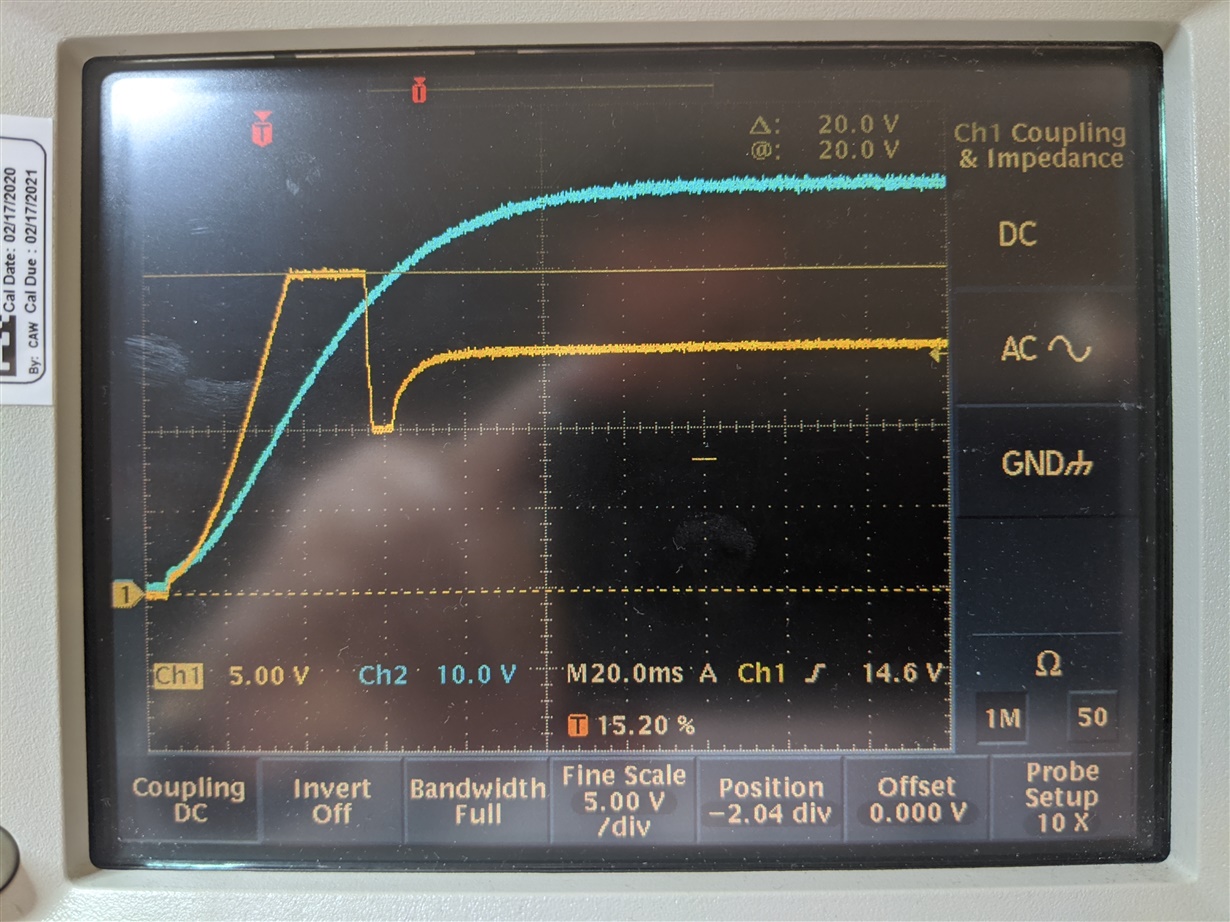Hi team,
i have a customer using the TL783 for 48V input and 20V output. and they have seen abnormal behavior where the LDO outputs low voltage after some time in small cases.
the soldering was confirmed good and the two voltage setting resistors measured correctly. the voltage across pins 1-2 was around 0.5V instead of the expected ~1.27V. based off datasheet equation, this 0.5V correlates with their low output voltage (8V) so the suspect is the internal reference of the chip is low.
they ran a test on the bench where they powered on the regulator to compare the bad chip (Figure 2 & 3) with a good one (Figure 1). the waveforms are attached below.
blue trace is input voltage and yellow is output voltage. normal output should be 20V. when ramping the input voltage up on the bad chip, they noticed that the reference voltage would be fine at 1.24V until 38V. after 38V, the reference voltage collapses to < 1V. if they ramp the input voltage back down, the reference voltage will not return to 1.24V until the input voltage falls under 25V.
the behavior is seen whether the IC is powered on in the normal manner when the product powers on, or when they feed DC from the bench supply to the IC. in this case, there is no switching going on, so the regulator should only see its own voltage setting resistors as a load.
do you know what could be causing this strange behavior?
they also found that they could "fix it" by touching the tab (VOUT) of the TL783 with a soldering iron. why would applying heat for a couple seconds to the tab fix it?
Thanks,
Kevin




